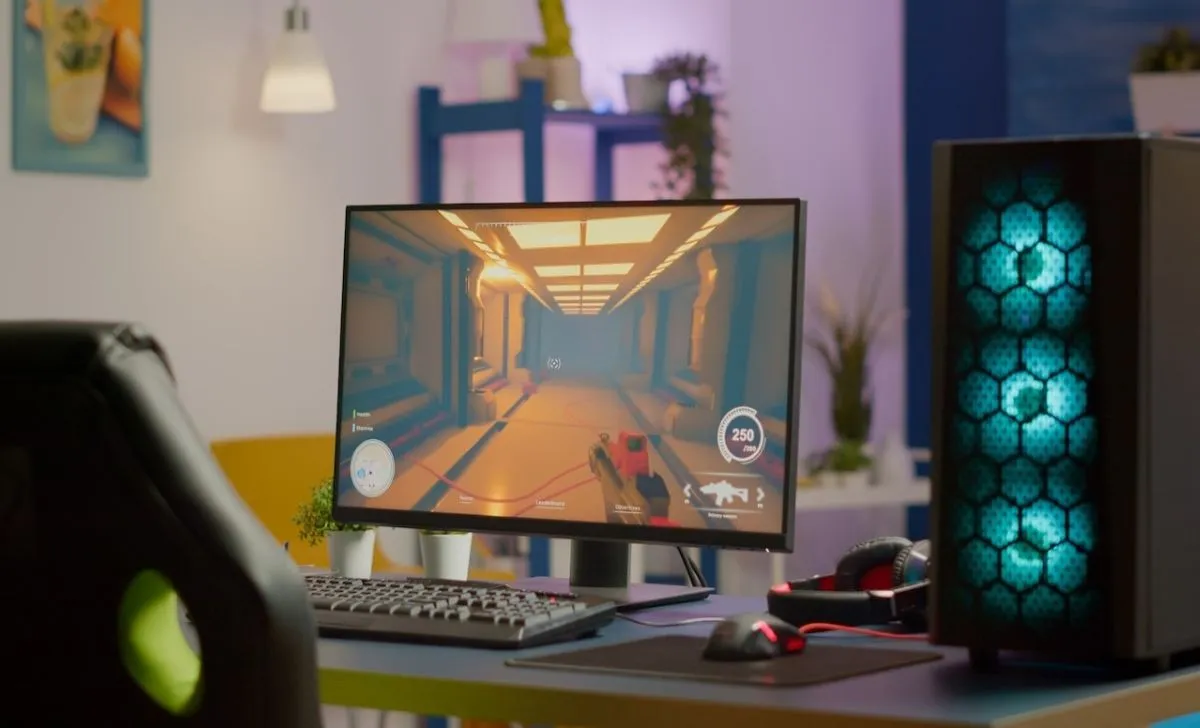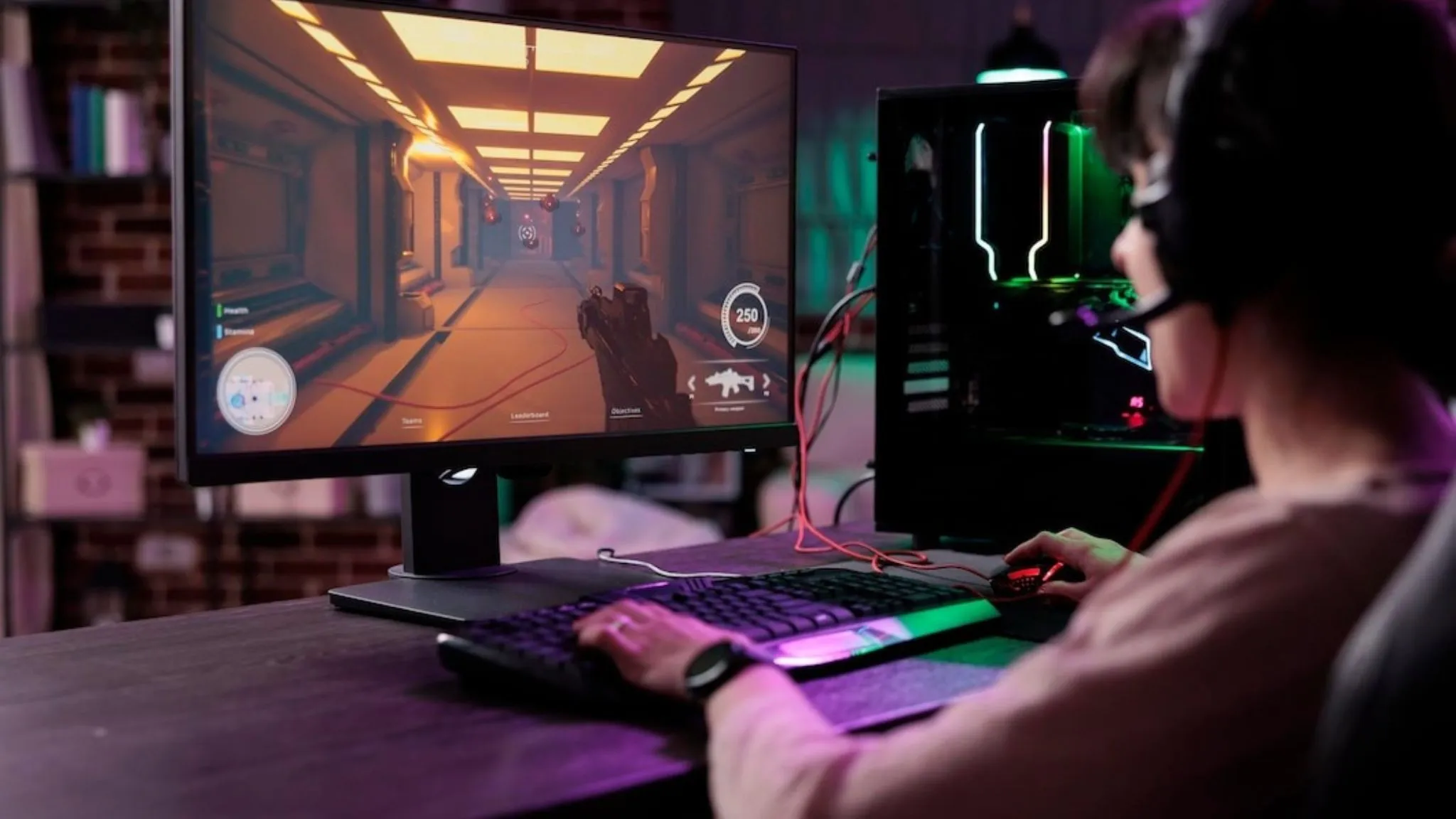Building your gaming PC can be an instigative and satisfying experience. Not only does this provide the opportunity to customize your system to your specific needs and preferences, but it also allows for potential cost savings compared to purchasing a pre-built gaming PC.
In this comprehensive guide, we’ll take you through the process of building a gaming PC from start to finish, including everything from choosing the right components to optimizing performance.

Section 1: Understanding Your Gaming Needs
Before starting your PC-building journey, it’s important to understand your gaming needs and goals. Consider factors such as the type of game you play, the required resolution and frame rate, and any upgrades you expect in the future. This will help guide your component selection during the building process.
Section 2: Choosing the Right Components for Your Gaming PC
Component selection is critical to building a high-performance gaming PC. Let’s explore each element’s order and bandy crucial considerations when choosing them
2.1 Processor (CPU): The CPU is the brain of your gaming PC. Consider factors such as clock speed, number of cores, and compatibility with your chosen motherboard.
2.2 Graphics Card (GPU): The GPU renders stunning visuals in games. Research different models, consider VRAM capacity, and ensure comity with your examiner. Motherboard
2.3 The motherboard: It acts as the central mecca, connecting all the factors. Look for features like socket comity, RAM places, expansion places, and support for unborn upgrades.
2.4 Memory( RAM): RAM affects gaming performance and multitasking capabilities. Determine the quantum of RAM you need to be grounded on the games and operations you use.
2.5 Storage (SSD/HDD): Choose between a solid-state drive (SSD) and a hard disk drive (HDD) for your storage needs. SSDs provide faster load times, while HDDs provide higher storage capacity at a lower cost.
2.6 Power Supply Unit (PSU): Make sure your PSU has enough wattage to support your components and provide high efficiency for stable power delivery.
2.7 Case and Cooling: Choose a case that accommodates your chosen factors and provides an acceptable tailwind. Consider additional cooling solutions, such as CPU coolers and case fans, to maintain optimal temperatures.
2.8 Peripherals and Accessories: Don’t forget about peripherals like a gaming keyboard, mouse, and monitor. Invest in accessories like a gaming headset or controller for an immersive gaming experience.
Section 3: Assembling Your Gaming PC
Now that you’ve gathered the parts you need, it’s time to assemble your gaming PC. Follow this way to ensure a successful figure
3.1 Workplace Preparation: Set up a clean, well-lit workplace with a level surface. Gather the necessary tools, such as screwdrivers, cable ties, and thermal paste.
3.2 Installing the CPU and CPU Cooler: Handle the CPU carefully and align it properly in the socket. Apply the thermal paste and attach the CPU cooler, ensuring proper cooling performance.
3.3 Installing RAM: Insert the RAM module into the RAM slot on the motherboard, following the manufacturer’s instructions. Make sure they are securely seated.
3.4 Installing the storage device: Mount your SSD or HDD in the appropriate drive bay. Connect the necessary cables to the motherboard and the power supply.
3.5 Installing a graphics card: Insert the graphics card into the PCIe slot, making sure it clicks into place. Connect the required power cable to the GPU.
3.6 Connecting Cables: Connect the various cables, including the power cable, data cable, and front panel connectors, according to the motherboard and component instructions.
3.7 Installing the power supply: Install the power supply in the designated area of the case. Connect the necessary cables to the motherboard, storage device, and graphics card.
3.8 Installing Case Fans: Install the case fans for optimal airflow, making sure they are properly attached to the motherboard or fan controller.
3.9 Cable Management: Organize cables to improve airflow and aesthetics. Use cable ties or Velcro straps to secure and manage cables.
3.10 Final Check: Double-check all connections, make sure components are properly seated, and check that cables are properly connected.
Section 4: Power On and BIOS Setup
Once your gaming PC is assembled, it’s time to turn it on and configure the BIOS. Follow these steps:
4.1 Power On: Connect the power cable and peripherals. Press the power button to turn on your PC and hear the startup beep or see the lights turn on.
4.2 BIOS Setup: Access BIOS by pressing a specific key during startup. Configure settings such as boot priority, date, and time, and enable XMP profiles for RAM.
Section 5: Installing the Operating System and Motorists.
Install your chosen operating system( Windows, macOS, or Linux). Afterward, install the necessary drivers for your components to ensure proper functionality.
Read More | Elden Ring Shadow of the Erd Tree: Explore Its Enigmatic Expansion
Section 6: Optimizing Performance
To maximize the performance of your gaming PC, consider the following optimization techniques:
6.1 Overclocking: If you are comfortable with it, overclock your CPU and GPU to get higher clock speed and performance. Research proper overclocking methods and use reputable software or BIOS settings.
6.2 System Monitoring: Use software tools to monitor your system’s temperature, clock speed, and usage. This helps ensure that components are operating within safe parameters.
6.3 Driver Updates: Regularly update your graphics card drivers and other necessary drivers to improve compatibility, stability, and performance.
6.4 Software Optimization: Optimize your operating system by disabling unnecessary background processes, adjusting power settings, and keeping your system clean of malware or unnecessary software.
Section 7: Tips for Troubleshooting
If you encounter problems during the build process or while operating your gaming PC, try these troubleshooting tips:
Check connections: Make sure all cables and components are properly connected and grounded.
Test Components: Test individual components in various configurations to identify potentially faulty hardware.
Update Drivers: Ensure your drivers are up to date to avoid compatibility issues.
Consult forums and communities: Consult online communities and forums where experienced builders can help troubleshoot specific problems.
Section 8: Final Considerations
By following these step-by-step guides and considering your gaming needs, you’ll be on your way to building the best gaming rig you can. Enjoy the process, and may your gaming adventures be filled with excitement and high-performance gaming experiences!




